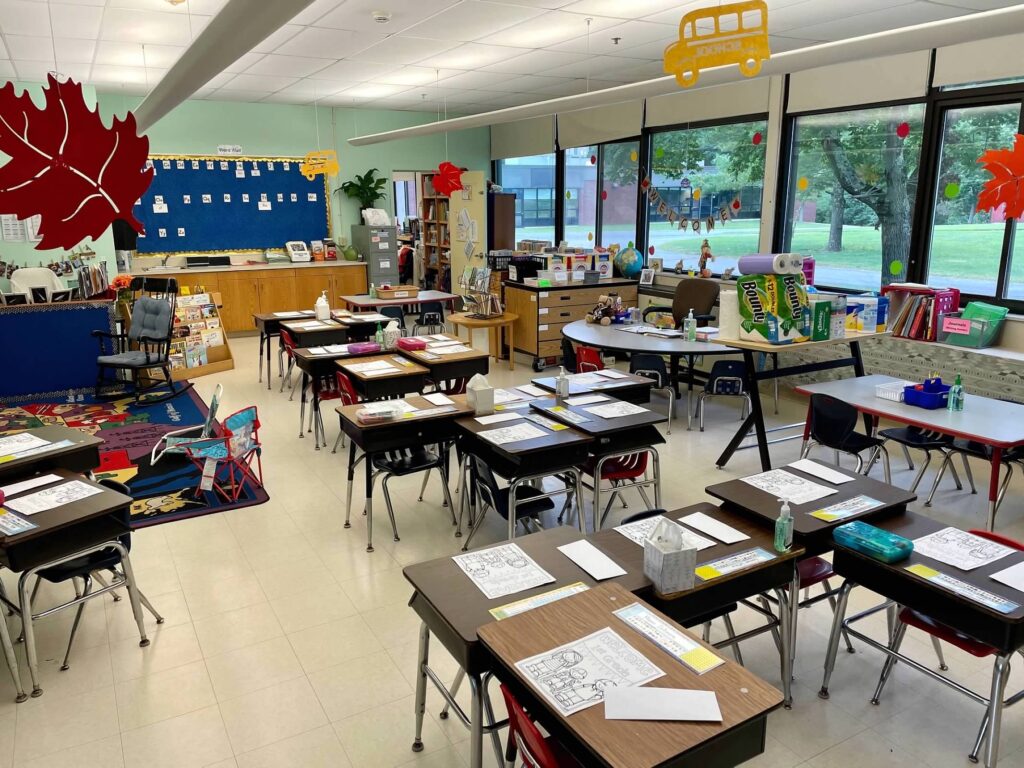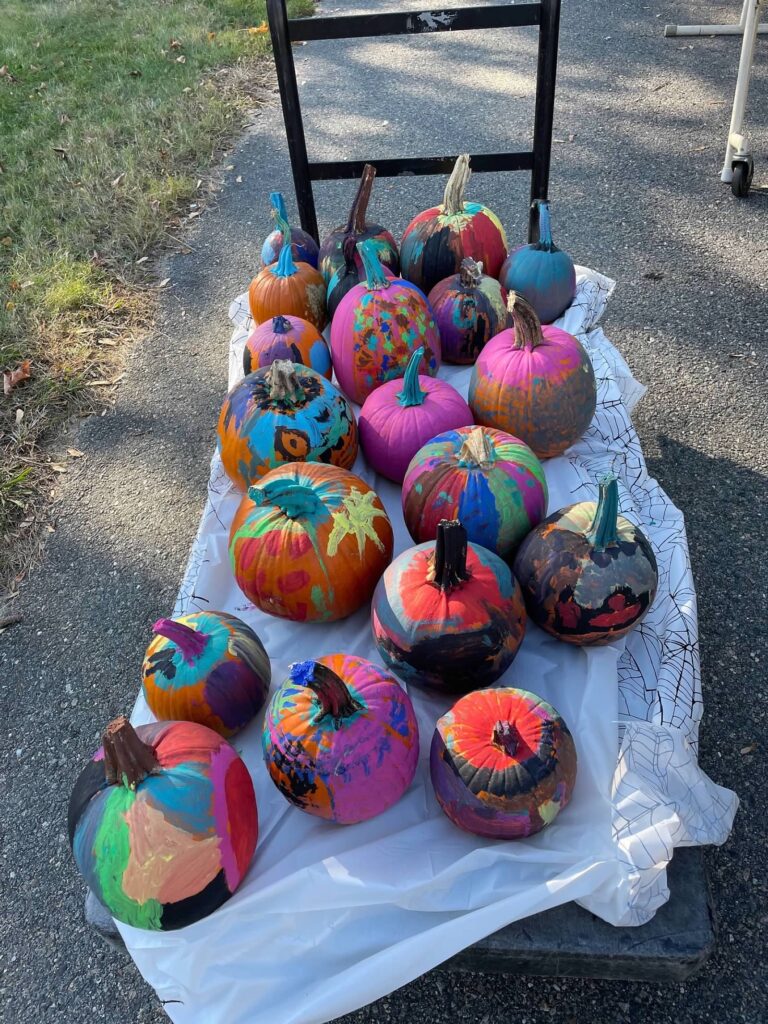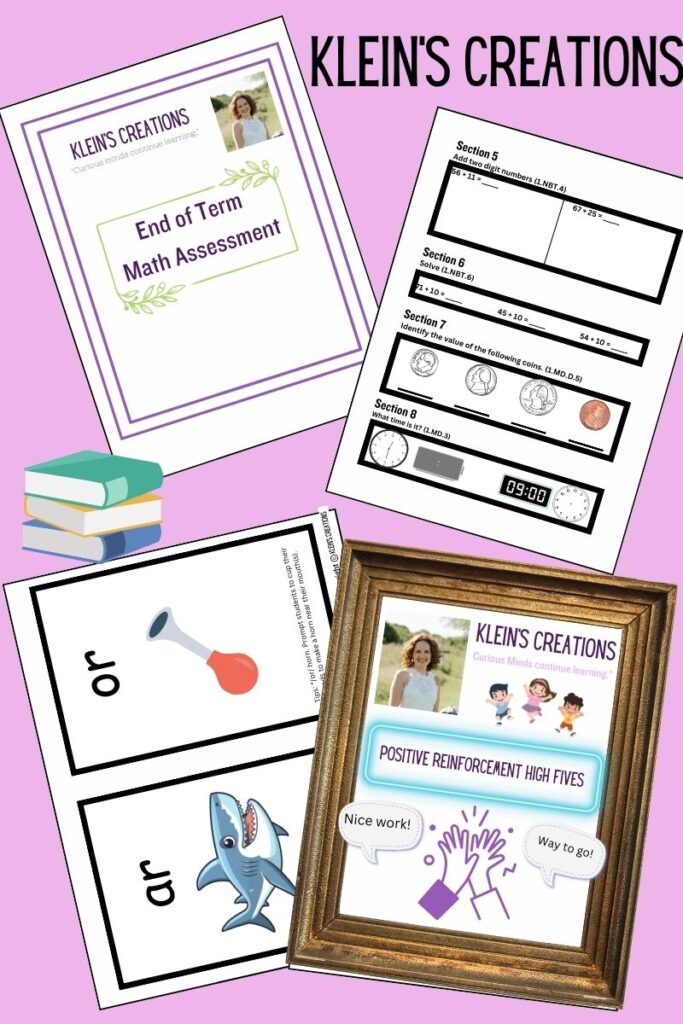By: Michelle Klein
I would argue the single most important thing I do in my class is to build community. For me, building community extends beyond my students and to their families as well. Relationship building is absolutely imperative to my success as an educator. This becomes even more important if I have a student who struggles with behavior. My students will do anything I ask them to do, and yes, I even mean “that” student. How do I do this? Before the school year even begins, I send out an introductory video. It includes videos and pictures of my real life and family. This eases a lot of first day jitters and makes students feel as if they have already met me before walking through the door. When they arrive that first day, I take the time to shake hands and say hello to every, single student. This meant personally introducing myself to 26 students last year. Once they are inside the classroom, I talk to them. I find out their interests and share mine. I also share pictures of my family and pets around the classroom. Later, I print and hang up pictures of them too. They trust me, because my students know I genuinely care. I treat them the way I would want my children’s teachers to treat them. When I first started out teaching, I was completely different. I kept very rigid boundaries and rarely got personal with my students or their families. I think this came from a place of insecurity. I was nervous about letting parents in, because I did not want to be judged. As time went on, my confidence grew and I learned I had nothing to hide from. In fact, having parents invested in my classroom was extremely beneficial for many reasons.

“The ability to ‘hide’ how things were at home was gone. Boundaries were blurred and faded on a daily basis.“


One of the positive things to come out of Covid is it dissolved a lot of the walls I had put up between me and my students’ families. During the 2020 – 2021 school year, I taught 100% virtually from my home. My youngest at the time had just had open heart surgery and I was doing everything I could to limit my family’s exposure to Covid. The students I taught were also at home, because their families had opted for a 100% virtual learning experience for various reasons. All of a sudden, we were in each other’s homes virtually. All the mess and chaos were visible and any illusions I had created that my own children were perfectly behaved all the time were annihilated as I tried day after day to teach with my own children screaming in the background. The same was true for my students’ families. The ability to “hide” how things were at home was gone. Boundaries were blurred and faded on a daily basis. Many parents had my personal phone number and home address. (I would not recommend this for obvious reasons, but desperate times called for desperate measures.) At first, it was extremely anxiety provoking. I felt vulnerable and open to criticism as my students’ parents were often in the room with their child, listening to me teach over the computer. It was uncomfortable, but you know what they say? Nothing changes until something changes. Growth happens in those uncomfortable moments, and it forever changed the way I interact with my students’ families. I became extremely close to those families and STILL talk to many of those parents on a regular basis. So what happened? We built strong relationships and a community of learners that included their families. We built intimacy and trust in that vulnerable place. The outcome was powerful and priceless.
“We built strong relationships and a community of learners that included their families. We built intimacy and trust in that vulnerable place.”
In the fall of 2021, I returned to my first grade classroom in person and brought the lessons I had learned during that fully remote year. I decided to do weekly classroom updates, which included pictures of the students in a PDF document. (I first got permission from my students’ families.) This allowed parents to see what their children were doing AND provided proof their children were happy. It wasn’t as difficult as you might think. I had a google document and popped the pictures into the document as I took them over the course of the week. These weekly emails provided reminders about upcoming events and made it so much easier on parents. The other big change was that while I always provided volunteer opportunities prior to Covid, afterwards I incorporated “Community Events” where “littles” were included. Here are some examples: Painting Pumpkins, First Thanksgiving Centers, Gingerbread Houses, Easter Egg Hunt and End of the Year Ice Cream Social. These events included my own children whenever possible. I was fortunate enough that my mom would bring my children in and it was pure magic seeing my children interact with my students. It humanized me to them and their parents, which made me so much more relatable. Conferences were a breeze in fact they were (gasp) ENJOYABLE. Families trusted my opinion and experience, because I was also one of them. I wasn’t some authority figure shaming them for not getting homework done or forgetting pajama day. They knew I cared about their children and had their children’s best interests at heart. When we went into IEP or student support meetings, we were a united front. As a result, I cannot stress the impact building relationships and a classroom community has had on my teaching. As always, I will not give you advice, because every classroom is different. However, I hope you gained something from my experience. Take what you like and leave the rest.
Want more?
Want more? Ready to shop for resources?

Check out Klein’s Creations on TPT!
- Targeted Phonics Lesson Planes
- No Prep Homework Calendars with and without dates
- High Frequency Flashcards
- Sound Cards (use multi-sensory approach)
- SEL tools
- End of Term Math Assessments
